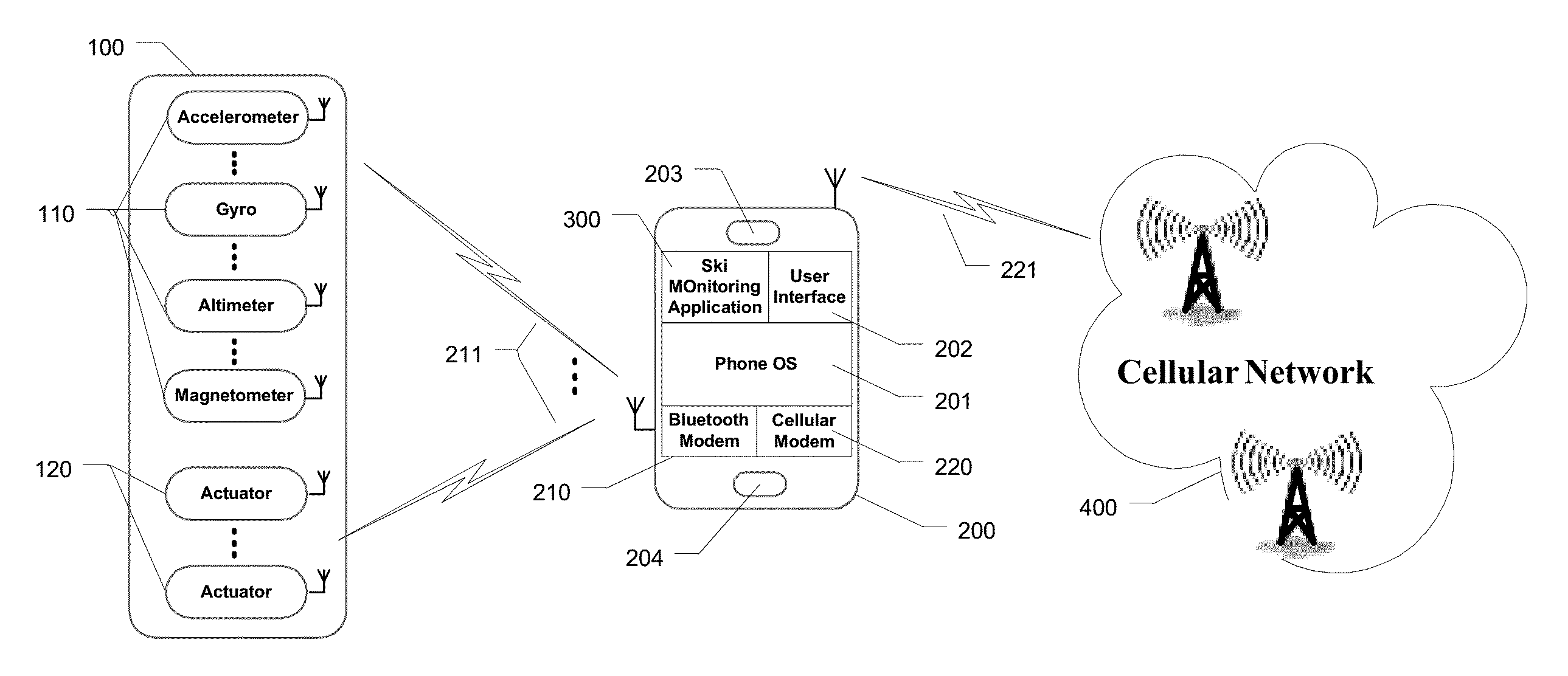Wireless Hierarchical Heterogeneous Pico-Net for Ski Control Systems
a hierarchical heterogeneous, wireless technology, applied in the field of wireless communication, can solve the problems of serious injuries, inability to meet the daily training needs of professional or recreational skiers, and affect the comfort and safety of skiing, etc., to achieve low latency, low power consumption of slaves, and convenient use
- Summary
- Abstract
- Description
- Claims
- Application Information
AI Technical Summary
Benefits of technology
Problems solved by technology
Method used
Image
Examples
Embodiment Construction
[0057]The following is a glossary of terms used in the present application:
[0058]Active Monitoring System—in the context of this invention a system able to collect various instantaneous vectors such as, acceleration, angular orientation, geo-location and orientation, then using various angulation and mathematical operations calculate the forces applied to various areas of sport equipment or the user body then send commands to actuators embedded in the sport equipment to provide corrective action.
[0059]Application—the term “application” is intended to have the full breadth of its ordinary meaning. The term “application” includes 1) a software program which may be stored in a memory and is executable by a processor or 2) a hardware configuration program useable for configuring a programmable hardware element.
[0060]Coach—in the context of this invention, any person authorized by the user to receive the data from the user monitoring system and provides analysis in real-time or off-line ...
PUM
 Login to View More
Login to View More Abstract
Description
Claims
Application Information
 Login to View More
Login to View More - R&D
- Intellectual Property
- Life Sciences
- Materials
- Tech Scout
- Unparalleled Data Quality
- Higher Quality Content
- 60% Fewer Hallucinations
Browse by: Latest US Patents, China's latest patents, Technical Efficacy Thesaurus, Application Domain, Technology Topic, Popular Technical Reports.
© 2025 PatSnap. All rights reserved.Legal|Privacy policy|Modern Slavery Act Transparency Statement|Sitemap|About US| Contact US: help@patsnap.com



